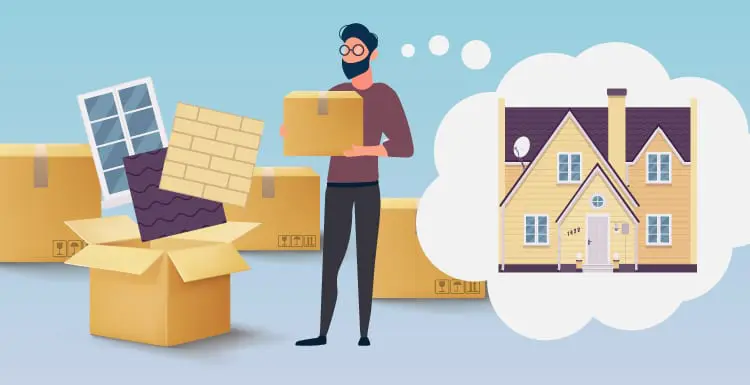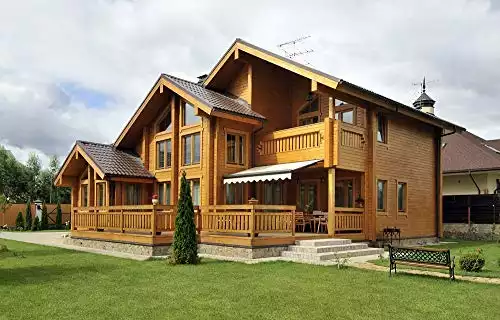Kit Homes are a great way to save money and avoid hiring a builder.
Builders, after all, increase your price using a construction management fee.
Learn how you can trim the fat on your next move with a pre-fabricated home.
What Are Home Building Kits?
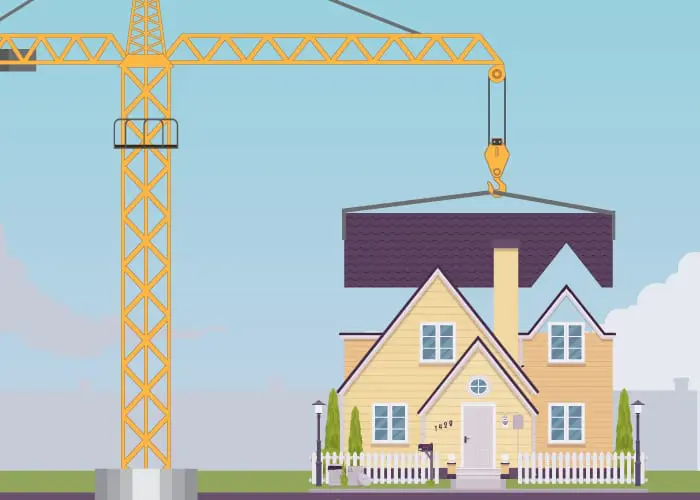
Also known as prefab or modular homes, a kit home uses pre-cut pieces of wood to make building a new home both faster and cheaper.
Kit homes became popular in the early 20th century by providing consumers with pre-cut lumber pieces and sections for a complete home build.
Clients need to have a local company complete their brick and masonry work and concrete for the foundation. They don’t include any electrical, plumbing, or sewage work, requiring additional contractors to finish these aspects.
All the pieces in a kit home are pre-measured and pre-cut to fit seamlessly together for a faster home build without the hassle of the extra work.
These ready-to-use pieces save a consumer anywhere from 30 to 40% in time and overall costs of building their new home.
There is a proper inspection and approval on these built sections in the factory, so there’s no need for an on-site inspection during the build process.
The signing-off of the finished materials is another reason why kit homes help save builders time and money. Some people confuse kit homes with mobile homes, but they are two different products.
Kit homes are permanent structures, while mobile homes can be transported to a different location if needed.
Kit Homes Manufacturers We Recommend
- Lindal Cedar Homes
- Gold Country Kit Homes
- ZipKit Homes
- Avrame Kit Homes
- DC Structures Barn Home Kits
- Pacific Modern Homes
- Inwood Custom Homes
- Imagine Kit Homes
- Landmark Home and Land Company
- Shelter Kit
There are glaring differences when comparing the cost of traditionally building a home to using a kit home.
For example, a standard on-site home build can cost anywhere from $120 per square foot or more, while a kit home can be as little as $40 to $60 per square foot.
If you’re trying to stay within a tight budget, a kit home could be the answer you are looking for when building your new home. An average design plan to complete can cost you as little as $50,000 or as high as $350,000.
Not sure where to begin? Here are our Top 10 favorite kit homes.
1. Lindal Cedar Homes
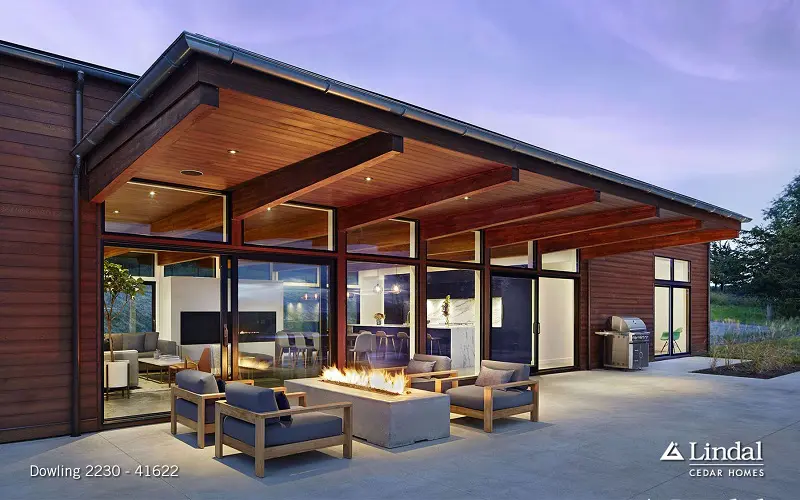
Image Source: Facebook.com/LindalCedarHomesInc
One of the first kit home companies, Lindal Cedar Homes, picked up where Sears left off in 1945.
Today, it offers a large selection of styles and sizes that are quickly shipped to any build site worldwide in a compact container.
Shop homes from traditional to ultra-modern with every beam in between. And it isn’t restricted to tiny homes — Lindal offers both moderate plans and sprawling estates.
Some of the company’s most unique designs are Usonian Houses inspired by the architecture of Frank Lloyd Wright.
Developed in partnership with the Frank Lloyd Wright Foundation and the School of Architecture at Taliesin, these modern designs ship complete with floor plans and materials for a striking design.
2. Gold Country Kit Homes
For DIY builders, Gold Country Kit Homes ship with prefab or panelized walls and engineered wood roof trusses. These panelized walls are pre-built by Gold Country, with windows already in place.
Pre-framed and numbered wall sections and shipped right to your build site. This way, all you have to do is stand them up and secure them in space, and there is no extra waste.
Pre-engineered one- and two-story plans can be modified to suit your needs, or you can create an entirely custom design.
Plus, Gold Country is on hand to help with site selection, septic systems, power to your lot, building permits, finding contractors, energy efficiency, and sustainable material options.
3. ZipKit Homes
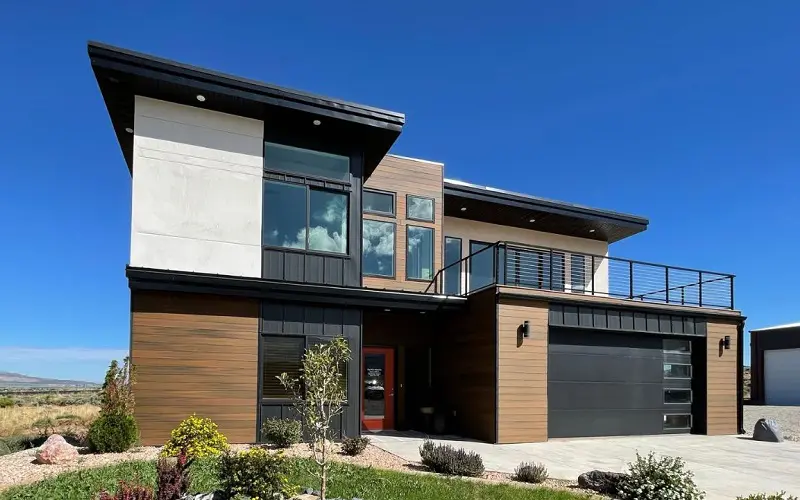
Image Source: Facebook.com/zipkithomes
ZipKit delivers high-performance roof and wall panels and components that are precision-built in their factory for easy assembly on your build site.
A complete “finish kit” is delivered after drywall is completed, including all interior finishing products for a finished home.
After you’ve decided on the design, ZipKit will contact your local building department to determine the engineering requirements in your area. Then, they complete the plans and send your submit-ready ideas with structural drawings and engineering calculations.
Hand this over to your contractor, who can obtain proper permits. Then, the exterior shell kit arrives for on-site contractors to put together.
Lastly, the finishing kit arrives with doors, casings, baseboards, hardware, shelving, cabinets, light fixtures, flooring, etc. Last step?
Move in!
4. Avrame Kit Homes
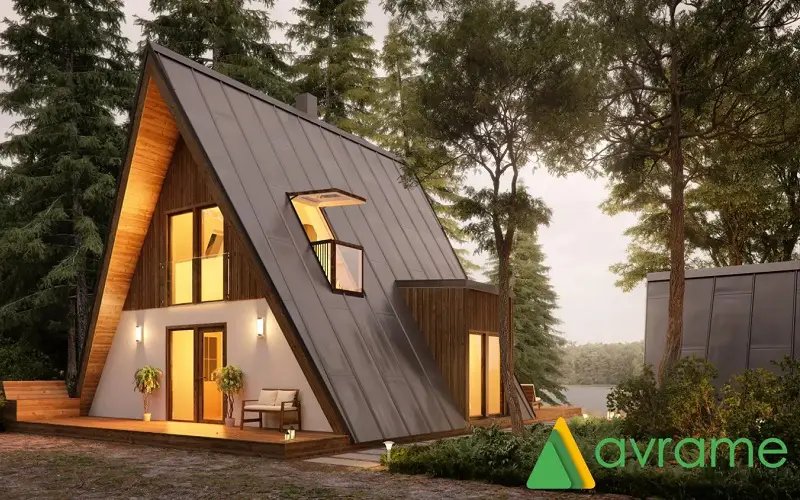
Image Source: Avrameusa.com
Avrame combines classic A-frame design with contemporary building materials for beautiful, affordable homes.
Choose a design from tiny homes to mid-sized houses, and pre-cut materials are delivered to your building site.
Easy-to-follow instructions ameans you can DIY with just two people, and there are no materials wasted. Popular for off-the-grid living, these minimal spaces can feature PV solar panels and solar thermal panels so you can build anywhere.
5. DC Structures Barn Home Kits
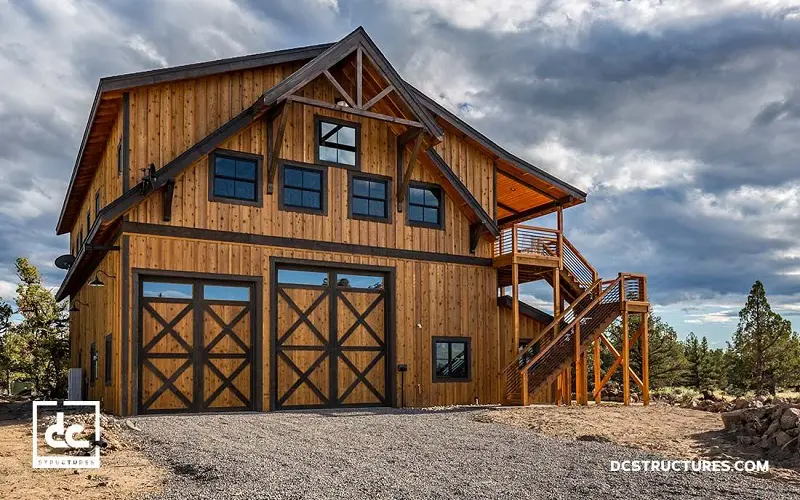
Image Source: DCstructures.com
The Barn Home offers both classic American style and time-tested methods of timber-frame or post-and-beam construction.
DC Structures works with customers to create one-of-a-kind barn home kit designs that reflect each homeowner’s unique vision.
Materials for the post-and-beam construction are sourced from mills in the Pacific Northwest and delivered pre-engineered to your build site. Rustic designs are available in both sprawling homes and for those looking to downsize to a cabin-style barn home.
6. Pacific Modern Homes, Inc.
Based in California, Pacific Modern Homes Inc. offers a large selection of pre-engineered kit home plans in an array of design styles and sizes. Computer-generated designs can be easily edited for individual preferences, or you can create your own design.
Then, panelized building kits include quality pre-framed and numbered walls and roof trusses. The designs even ship with a diagram that tells you exactly where the numbered sections are placed on the foundation.
Want to work with a builder?
Pacific’s owner-builder financing programs help you find a contractor and get pre-approved financing for land, home, and permits.
7. Linwood Custom Homes
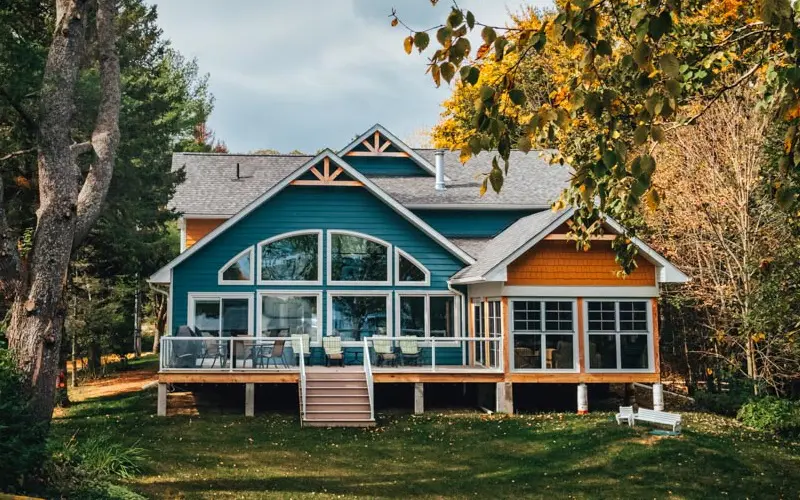
Image Source: Linwoodhomes.com
Linwood Custom Homes offers house kit plans designed to save $5–$10 per square foot when building your new home. Choose a fully customizable design, which is then manufactured to meet your needs and budget.
With all of the details planned, any good builder can construct your home at a lower labor cost.
Choose from timber frame and log houses, small cabins, large residences, post and beam construction, traditional estates, and contemporary designs — Linwood has a library of more than 400 offerings.
8. Imagine Kit Homes
Imagine’s Kit Homes are designed for smaller and more affordable living. Their premise is to help you build a tiny house in 21 days or less for under $65,000.
The steel-frame tiny house kits are designed to feel large on the inside, delivered with easy-to-follow house plans and instructions.
The cost-effective model can save up to 40% on building costs. Imagine kits come with plans, materials, and support to do it yourself on a low eco-footprint. Plus, a 50-year warranty offers peace of mind.
9. Landmark Home and Land Company, Inc.
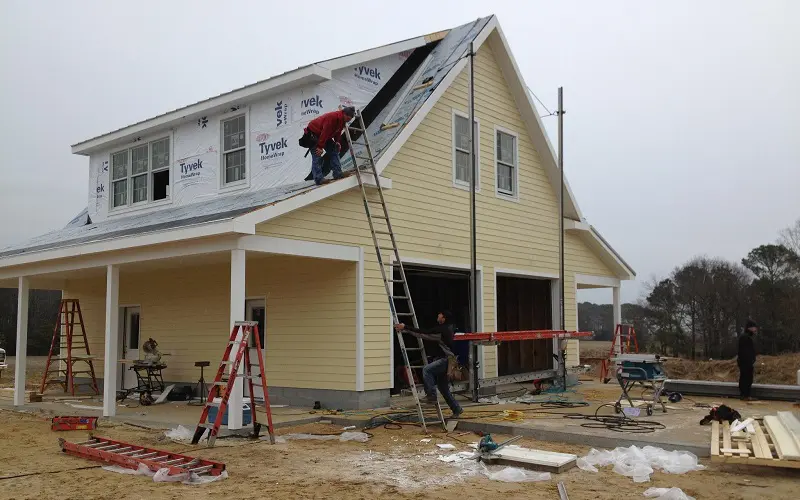
Image Source: Facebook.com/Landmarkhomeandland
Landmark Home and Land Company offers kit homes created by their very own designers and engineers. The-one-stop-shop is knowledgeable about design, engineering, permitting, production, and delivery process to ensure your build goes smoothly.
Panelized kit homes help lower framing costs and avoid weather issues due to quicker framing time and quality control. Plus, there is less waste and lower dumpster costs. Choose from an array of easily customizable designs.
10. Shelter Kit
Yes, you can do it yourself! Shelter Kit’s DIY homes range from $32 to $50 per square foot of living space. The New Hampshire–based company helps clients build their own houses, barns, and garages for nearly 50 years.
Lead time can be as little as four weeks, and building kits arrive with all of the materials for you to build a complete, weather-tight shell, including the fame, sheathing, siding, hardware, subfloors, and roofing.
Precut kits are easy to fit and assemble, and each comes with a construction manual intended for amateur builders.
Benefits of Kit Homes
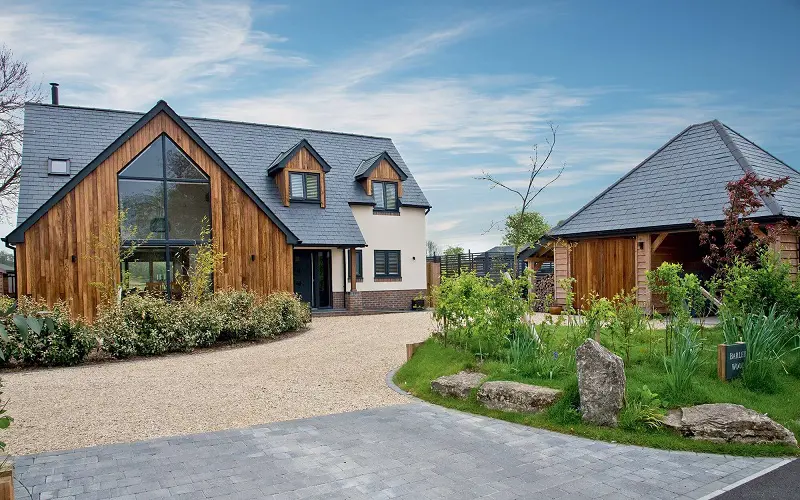
Image Source: self-build.com
These kits create permanent homes rather than mobile ones that you can easily transport to a new section of land.
Although their price point is closer to that of a mobile home, customers can choose a design they love and easily create their permanent dream home.
If you want a more effortless and cheaper way to build your next house, this method may be the answer.
The many benefits to using a kit home for your next build include:
- Cost-effective
- Less time to build
- Flexible designs
- Don’t depreciate in value
- Are designed to last
Cost-Effective
When comparing using a kit home to a traditional home build, they are incredibly cost-effective.
Because the pieces are measured and cut in a factory setting, they arrive at the building site ready to put together.
As a result, there are fewer delays when using a kit home since everything is ready to assemble once the kit arrives. Some consumers will put together their own kit home, while others will hire a contractor.
Even with additional contractor labor costs, the overall build is still relatively cheaper than traditional home builds.
In addition, there is no material wastage, and workers don’t spend time waiting around for other pieces to finish before they can work on their area.
Less Time to Build
Because kit homes come to the building site ready to put together, you’ll find that it takes anywhere from 30 to 40% less time to build overall.
In addition, they’re quicker to put together since all the material fits together perfectly.
Traditional home builds can see severe delays in progress due to weather conditions since they can take months to complete. Kit homes don’t take as long to finish and have less chance of having weather delays during construction.
Flexible Designs
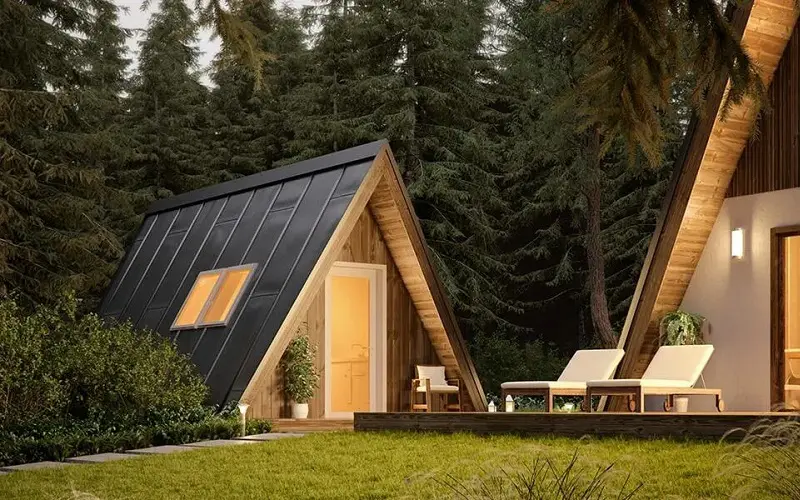
Image Source: Avrameusa.com
As technology advances, so do the many products that consumers purchase, including kit homes.
In addition, many companies have flexible designs that you can customize to create your perfect dream home.
As with any traditional build, a kit home can include finishing touches to make your house as individual as you are. Your house doesn’t have to look exactly like your neighbor’s place, even if you both got kits from the same company.
The many customizable options can also ensure that you stay within your budget rather than end up with a home that carries a hefty price tag.
Don’t Depreciate in Overall Value
These homes don’t depreciate in overall value, since they are permanent structures.
You’ll put them on a foundation, and they’ll hold their value as any other traditionally built home would.
Unlike their mobile counterparts, kit homes fair very well in the housing market, even as the home ages.
Are Built to Last
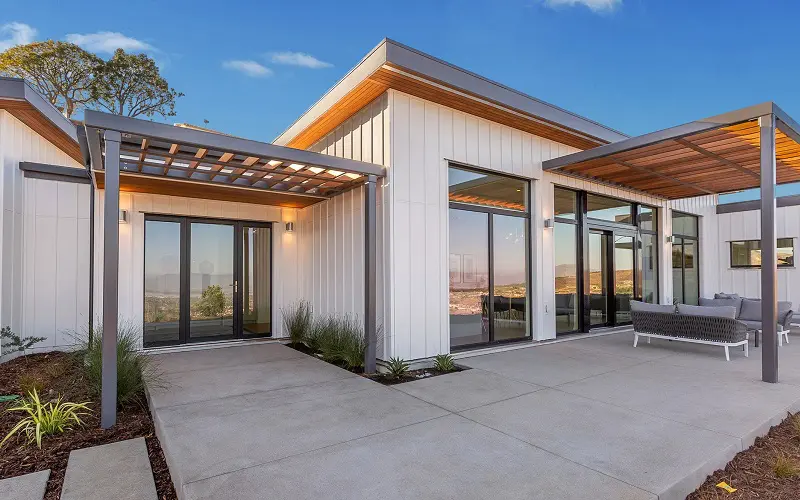
Image Source: Dezeen.com
Some people may believe that kit homes contain inferior materials, but that is not the case.
Instead, all kit homes will include the proper building materials that you’d find in a traditional build, making them safe, durable, and meant to last.
Many families today are still occupying and living comfortably in kit homes from years ago. These prefab homes are durable and manufactured to last 60 years or more.
This longevity makes them an excellent alternative to on-site built homes.
How Much Do Kit Homes Cost?
The cost of kit homes varies significantly with each manufacturer.
Each company will have numerous design plans with customizable options to choose from.
As with any major purchase, the more bells and whistles you add to your kit home, the higher the end price will be.
Things to Consider
Although purchasing a kit home sounds like a dream come true for many potential homeowners, there are some things you should consider before making a purchase. Before buying, consider the following:
- You must purchase the land first
- Many communities will not allow kit homes on subdivisions
- All kit homes need a foundation built first
- They don’t come with electricity, plumbing, or sewage
- Financing can be tricky with construction loans that eventually convert to a mortgage
- Any upgrades or additions will increase the total cost
- Many manufacturers differ in their kit homes, so you’ll need to shop around
If you’re contemplating a kit home for your next build, be sure to do your homework.
Empty land lots will need electricity, natural gas, and sewage hookups, and you’ll have to check with your local jurisdiction for any building permits or limitations.
If you’re financing your kit home build, be sure to talk to a banking specialist about your options for the process.
Securing financing can be tricky, so you’ll want to get this locked up before buying the kit or land.
Frequently Asked Questions
Are kit homes still available?
Yes, many companies are still providing kit homes for consumers worldwide. Whether you are looking for your next dream house, a cabin, or a tiny retirement home, kits are customizable to any need and budget.
Can I build a kit home myself?
If you are handy, it’s entirely possible to build your kit home yourself. You may still need to hire a contractor for the foundation and masonry work, though. Many homeowners require professionals for the plumbing and electrical work.
While it can save you even more money by building it yourself, it could take you longer to complete the job than it would if you hired a company to do it for you.
How much does a kit home cost?
The total cost of a kit home will depend on the size and the design details you choose in your plan. On average, expect to spend between $40 to $60 per square foot to complete your kit home build. Comparing these builds to traditional homes can be approximately 40% less expensive than a standard on-site home build. Depending on the square footage and customizations, you’ll find many kit homes for as little as $50,000 and upwards of $300,000.
Closing Thoughts
Kit homes have been around for many years, and homeowners are coming back to see just why they were so popular.
If you have land to build a new home on, these prefab buildings can be a cost-effective way to complete your new house in less time.
Unlike other alternatives such as mobile homes, kit homes don’t depreciate in overall value and use high-quality materials.
These aspects ensure that your home will last through the years and will make your investment worthwhile.

